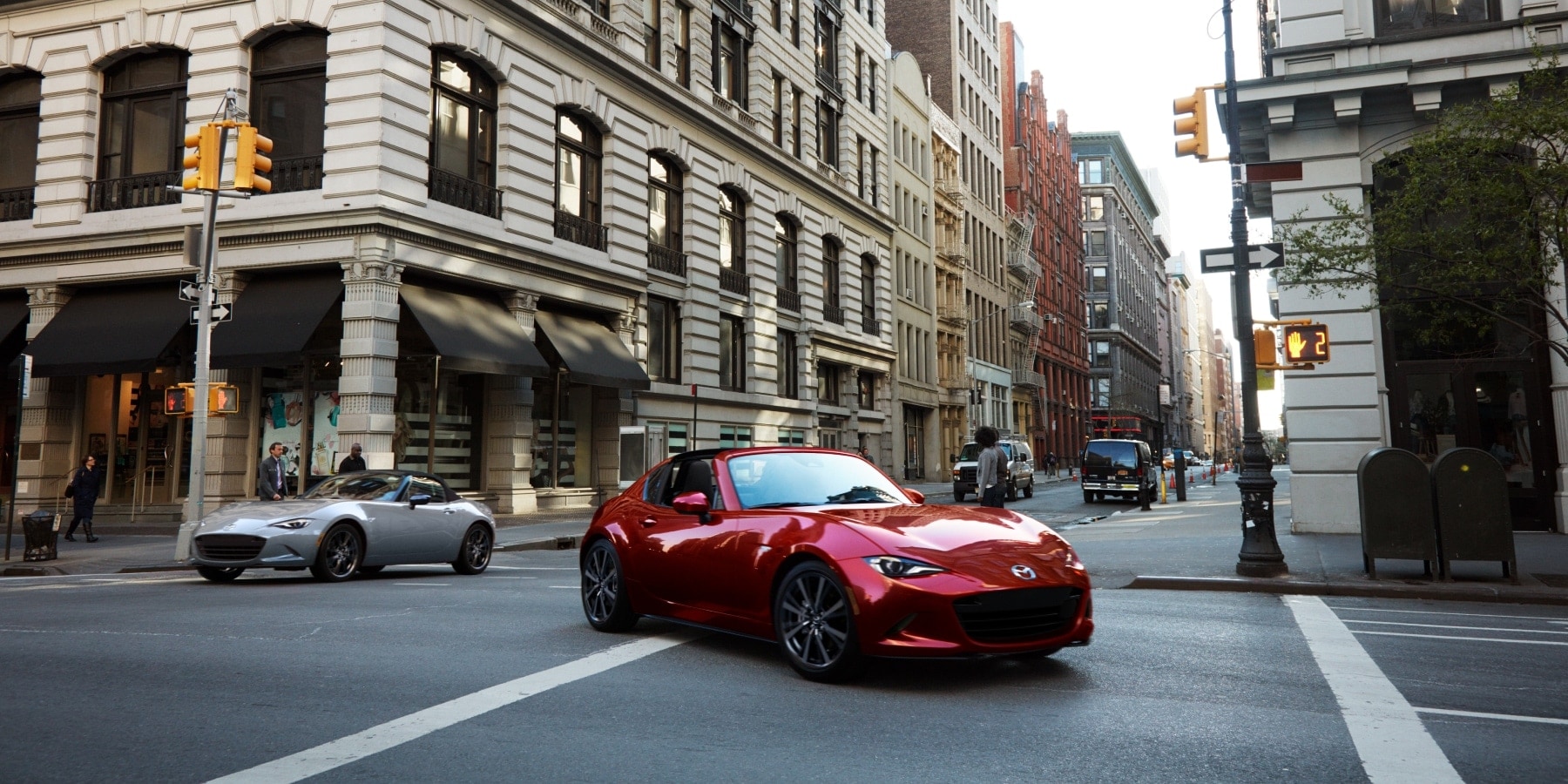What is a Blind Spot Monitor (BSM) in a Car?

Navigating the road can be tricky, as potential blind spots can block a clear view of your car's surrounding areas. According to the National Highway Traffic Safety Administration (NHTSA), these blind spots contribute to approximately 840,000 accidents every year in the U.S., with 300 resulting in fatalities.
That’s why most car manufacturers today equip their latest models with Blind Spot Monitoring (BSM) systems, alerting drivers when a vehicle or obstacle is detected in this obstructed area. A study by the Insurance Institute for Highway Safety (IIHS) revealed that blind spot warning technology reduces lane-change collisions by 14% and related injuries by 23%, highlighting the significant role BSM systems play in preventing injuries and saving lives on the road.
In this article, we’ll share what you need to know about BSM in cars.
What does a Blind Spot Monitoring (BSM) system do, and how does it work?
Blind spots are common in most vehicles due to the limited visual range of rear view and side mirrors. Factors such as a driver’s height, the size and shape of the vehicle’s windows, the placement of roof pillars, and its overall body design can also impact the size of blind spots.
To help drivers become more aware of objects in their blind spots, many car manufacturers offer an advanced driver-assistance feature called blind spot monitoring. Using a combination of sensors, cameras, and radar technology, this technology continuously scans blind spots for obstacles, and can provide visual and auditory warnings to alert the driver that it’s unsafe to merge into a lane. Drivers can typically enable or disable their BSM system using their vehicle’s infotainment system or by pressing a dedicated button depending on the automaker.

Advanced Blind Spot Monitoring Systems
Some BSM systems provide real-time camera footage of a vehicle’s blind spot when the driver switches on their turn signal, allowing the driver to quickly assess if it’s safe to change lanes or not. Other advanced versions of BSM can gently nudge the steering wheel to steer away from the lane marker back to the center or use braking input to help avoid collisions. However, even with these advanced technologies in place, it’s still best practice to glance over your shoulder to check for potential cars or two-wheelers in your blind spots before making a lane change.
What triggers BSM activation?
BSM activation generally occurs in the following situations:
● Vehicle detected in adjacent lane: While driving, the BSM system continuously scans adjacent lanes for vehicles that may be in the blind spot or may be fast approaching from behind. If a vehicle is detected, the system can issue a warning to the driver.
● Last-second merges: In cases where an approaching vehicle suddenly merges into a neighboring lane and enters a blind spot from the side, BSM can trigger warnings.
● Stationary or slow-moving obstacle detected in the rear: Some advanced BSM systems are also equipped with rear cross-traffic alert technology that, while reversing, can detect stationary or slow-moving obstacles, such as pedestrians or cyclists, approaching the vehicle’s path from the side. This is helpful in parking lots and many urban environments.
Types of Blind Spot Monitoring
Various car manufacturers have put their own spin on blind spot monitoring systems, with differences in how these systems detect and react to potential hazards. These variations result in varying levels of functionality and may include additional features for enhanced safety and convenience. Broadly, these systems can be categorized into three main types:
Blind Spot Warning
Blind spot warning is the most basic form of a BSM system. It simply provides either a visual cue — such as a flashing icon on a vehicle’s dashboard or side view mirror — an auditory or haptic alert, or all when a vehicle is detected in a blind spot, and you have initiated the vehicle’s turn signal.
Blind Spot Warning with Steering Assist
This type of advanced blind spot monitoring takes safety a step further through corrective action. Specifically, if the driver has indicated a lane change with their turn signal and attempts to change lanes when a vehicle is in the blind spot, the system can apply steering input to keep the vehicle from moving to an occupied lane.
Use alongside Rear Cross Traffic Alert (RCTA)
When people think of blind spots, they often think of the areas alongside a vehicle that are difficult to see. However, the rear section of any vehicle can also create blind spots, especially when reversing in congested parking lots. This highlights the importance of Rear Cross Traffic Alert (RCTA) as a valuable complement to BSM technology. It functions much in the same way BSM does, except it activates when the vehicle is shifted into reverse. When traffic approaching from the side is detected, it can emit audible and additional warnings. Combining BSM and RCTA helps give the driver 180-degree awareness and a greater sense of safety when maneuvering out of tricky spaces.
Benefits of blind spot monitoring
Here’s how blind spot monitoring helps enhance the driving experience:
● Enhanced safety: As mentioned above, BSM can significantly reduce the risk of collisions caused by blind spots, helping drivers make safer lane changes and merge with confidence.
● Reduced stress: Knowing that BSM is constantly monitoring blind spots may help reduce driver anxiety, especially in heavy traffic or on congested highways.
● Improved confidence: Drivers can feel more confident behind the wheel, knowing that their vehicle has an extra layer of protection against potential blind spot-related collisions.
● Increased response time: Even with a simple blind spot monitoring system, having real-time alerts to notify you of present vehicles may give you more time to respond if you or the vehicle next to you merges into the same lane.
Limitations of blind spot monitoring
While blind spot monitoring is a valuable safety feature, it is essential to understand its limitations:
● False alarms: BSM systems may occasionally issue warnings when there is no actual threat in the blind spot, such as when passing a stationary object on the side of the road or if there’s debris on the camera lens (if equipped).
● Limited coverage: BSM systems may not detect vehicles or obstacles that are too close to the vehicle, too far behind, or in adjacent lanes that are not immediately next to the driver.
● Speed limits: Each blind spot monitor has certain speed differential limits, meaning that if the vehicle is traveling or an adjacent vehicle is passing you at speeds outside its range, BSM warnings may not occur.
For all these reasons, drivers should not solely rely on BSM and should always perform visual checks and use their mirrors before making lane changes or merging.
Tips for how to use blind spot monitoring
To make the most of your BSM system, consider these tips:
● Double-check mirrors: When using BSM, make sure to check with your own eyes for any obstacles or vehicles that may be in your blind spot to ensure accuracy.
● Keep sensors clean: Ensure that the sensors and cameras responsible for BSM functionality are clean and free from obstructions, as dirt or debris can affect their accuracy.
● Consult your car manual: Each BSM is unique to the car manufacturer; make sure you know how yours functions to accurately understand and use it.
● Be aware of limitations: Since not every BSM operates in the same way, ensure you are aware of any limitations such as only functioning at certain speeds.
Blind Spot Monitoring at Mazda
Mazda: Drive with confidence
No matter where your journey leads, you can rest assured that Mazda is focused on the safety of you and your loved ones on the road. Our vehicles are designed with i-ACTIVSENSE® technology, comprised of an array of cameras and sensors to help you stay in tune with your surroundings. Our Mazda CX-90, CX-90 PHEV, CX-30, CX-50, Mazda3 Sedan, Mazda3 Hatchback, 2025 CX-70, and 2025 CX-70 PHEV models all earned a 2024 IIHS TOP SAFETY PICK+ award for intuitive safety technology.
Blind spot monitoring is just the tip of the iceberg — learn more about other safety features available by exploring our suite of safety technology online or by visiting your local Mazda Dealer today.
This article is intended for general informational purposes only and is based on the latest competitive information available at the time of posting. Information herein is subject to change without notice and without Mazda incurring any obligations. Please review a variety of resources prior to making a purchasing decision. Visit Resource Center for more articles.




















